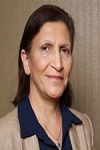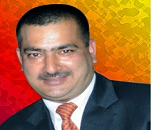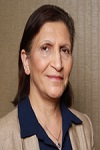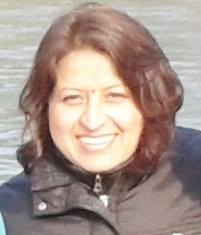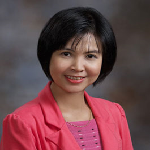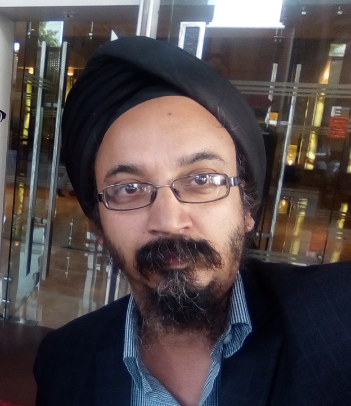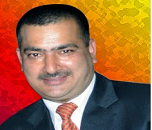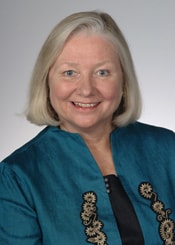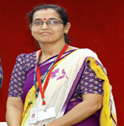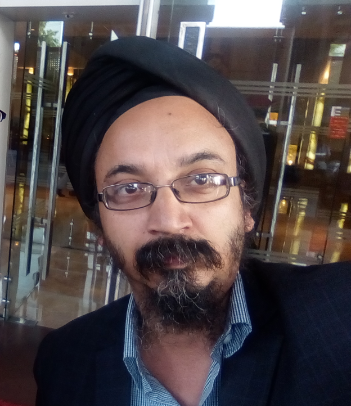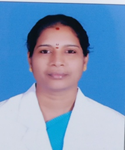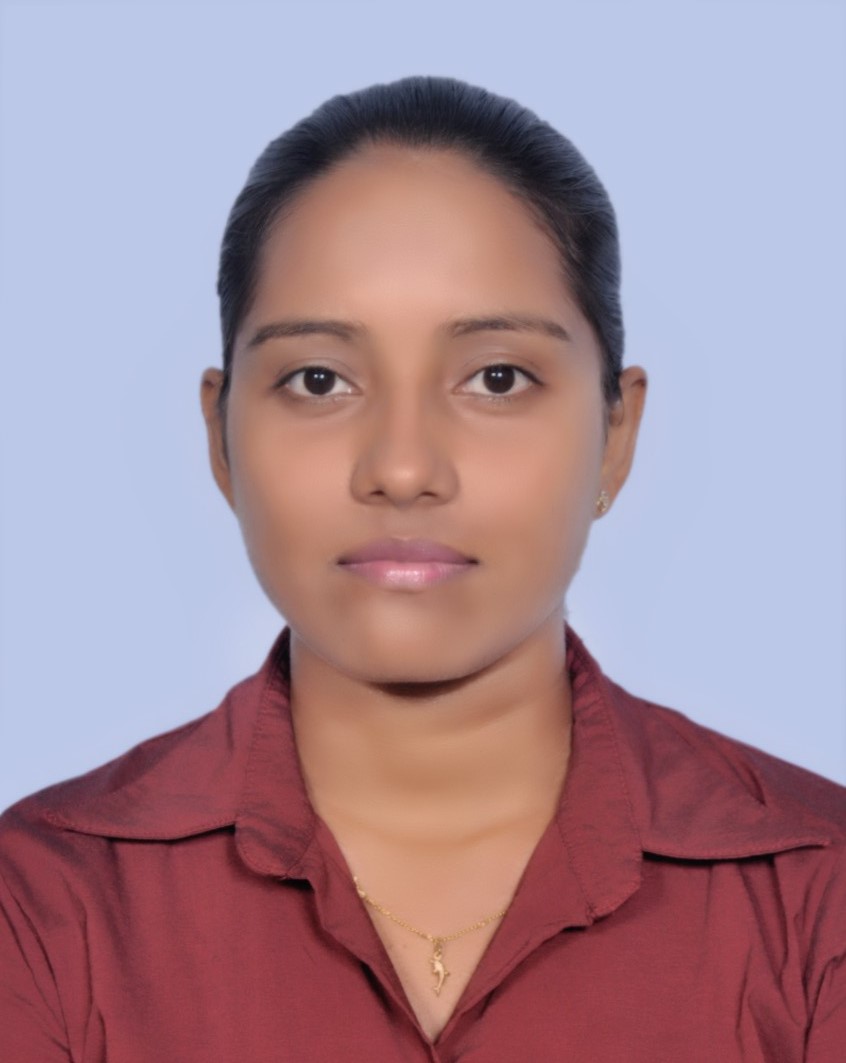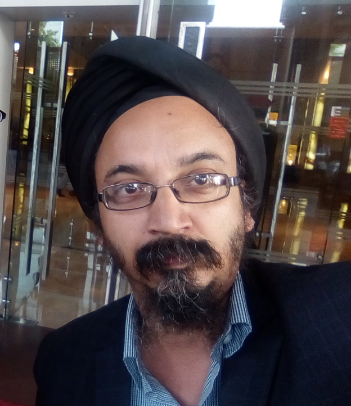Scientific Program
Keynote Session:
Title: Learning to learn: An exploration of the experience of overseas nurses undertaking higher education in the United Kingdom (UK).
Biography:
Michelle currently works a City University of London as the Programme Director: Mentorship : Supporting & Assessing Learning in Practice Settings and Practice Lead for Adult nursing students. Michelle has previously worked as a Senior Lecturer at Buckinghamshire New University and Kingston University & St Georges University, London. This followed a successful nursing career as a District Nursing Sister and as an Intermediate Care Nurse. Michelle has taught a range of subjects latterly with a focus on Public Health, Culture & Diversity in Healthcare, Professional Nursing and Management of Long term conditions.
Michelle has an MSc in Medical Anthropology and has a keen interest in culture, expressions of illness and how nurses cope with this. Michelle is currently in the final phase of her PhD exploring the experiences of Indian nurses coming to the UK to study and work.
Michelle has an MSc Medical Anthropology; BSc Community Nursing (District Nurse); PGCE; Nurse Prescriber; Diploma In Nursing (Adult); BA (Hons) Business Studies
Abstract:
The consensus exists that nursing is a global profession where much emphasis is placed on the transference of skills and knowledge. In reality the situation is more complex as each society attributes its own cultural constructs onto what is meant by the term nurse and how a nurse should be educated. This presentation will detail aspects of an ethnographic study exploring the lived experience of Indian Nurses who have undertaken programmes of study in the United Kingdom (UK). It will also draw on experience of teaching nurses whose primary education was not in the UK. Existing research examines the impact on the nurse as they enter the work force but there is a dearth of literature available on the experience of overseas nurses’ experience of a UK based education. The study has revealed that the concept of ‘learning to learn’ is paramount in the delivery and success of overseas nurses undertaking an education programme away from their home country. The Indian nurses’ previous experience of didactic rote learning has little bearing on the ethos of a UK education with the emphasis on independent and reflective learning. The expectation is often on the overseas nurse to adapt their learning style to suit the institute they are attending. However the study has revealed the same should be said of the institute. In order to bridge this gap cultural sensitivity needs to be employed in the delivery of teaching and this should be a two way process between the institute and the overseas nurse with an emphasis on cultural competence, adaptation and partnership learning.
Title: How could technologies help to improve care and enhance nursing joy?
Biography:
Dr Dirk F de Korne is currently the Deputy Director, Medical Innovation & Care Transformation at KK Women’s & Children’s Hospital (KKH). He also holds a position as Adjunct Assistant Professor at Duke-NUS Medical School Singapore and Erasmus School of Health Policy and Management, Erasmus University Rotterdam, Netherlands. In KKH, he is responsible for the hospitals’ overall innovation strategy and execution, including the alignment and facilitaiton of initatives and projects pertaining to cross-departments, multi-disciplinary collaborations towards patient service integration with relevent stakeholders.
Since 2003, Dirk has focused on quality improvement and organizational strategy in hospital care. His implementation, research, and teaching work focusses on understanding the diffusion of quality and patient safety innovations and include business process and systems design, telehealth, human factors & ergonomics, and performance benchmarking. Before his move to Singapore in 2013, he worked as Quality & Safety Consultant at The Rotterdam Eye Hospital. As lecturer he has been teaching health care quality and organizational sciences as well supervised bachelor and master graduates. He holds a MSc in Health Policy & Management from Erasmus University Rotterdam and a PhD in Public Health from University of Amsterdam.
Abstract:
Today’s hospitals are rich and complex socio-technical environments where technology and human actions are closely interwoven and patient’s health outcomes are co-dependent on the success of this interaction. Moreover, it is increasingly recognized that the patient journey takes mostly place outside of the hospital.
As medical and nursing care becomes more technology-dependent, many fear that sensors, robotics, digitalization, machine learning and artificial intelligence will take the humanity out of health care. Do we need to worry?
In this session, it is argued how ‘high tech’ can perform repetitive and redundant activities to enable nursing and medical staff to focus on ‘high touch’. Examples are taken from various area’s of women’s and children’s care, including smart health video consultation, pregancy chatbots, and real-time notifications for hand hygiene performance. If applied properly, new technologies could optimize patient health outcomes while enhancing nursing joy and career perspectives.
Title: The Perceived and Unmet Needs of Adult Family Members of Patients in PACU
Biography:
Hana Kadhom has 35 years’ experience in nursing as a practitioner and educator. Her experience has been across the Middle East and UK. She obtained her PhD from the University of Hull (UK)1989 and she has advanced postgraduate diplomas from British Universities (in Nursing Education and Health and Safety) ,She is a former Senior lecturer and Director of Nursing Degree Bridging programme (RCSI) University of Royal College of Surgeon Bahrain and Saudi Aramco
Abstract:
Background: The existence of specific and identifiable family needs of critically ill patients has been proven through research studies. However, little is known about the needs of family members of patients in Post Anesthesia Care Unit who may experience stress, anxiety, helplessness, and inability to cope.
Aims of the research: The aim of the study is to (a) evaluate the perceived needs of adult family members of patients in Post Anesthesia Care Unit, (b) to know to what extend these needs are met, and (c) to identify whether the needs differ based on background characteristics.
Methodology and Research Design: A quantitative, descriptive design was utilized. A convenient sample of 100 adult family members of patients in Post Anesthesia Care Unit was selected at one of the tertiary hospitals in Bahrain. A questionnaire was used that include: a demographic data form, the Critical Care Family Needs Inventory (CCFNI), and Needs Met Inventory (NMI).Descriptive and inferential statistics using SPSS version 20 was used for data analysis.
Findings/ Results: The findings showed that the 10 most important needs identified by family members were related to “Assurance” and “Information” with mean score of 3.87. The need for “Assurance” was perceived as “always” met with mean score of 3.51. No significant differences due to gender, age, level of education, relationship to patient, and household were found.
Conclusion: The family members of patients in Post Anesthesia Care Unit considered the need to be reassured and kept informed during the immediate post-operative period as very important.
Recommendations: Nurses must direct their practice towards holistic care by implementing effective interventions to meet the family needs and enhance their ability to cope. Further study of visitation in post anesthesia care unit is needed that may guide change in departmental policies and procedures.
Keywords: Family needs, post anesthesia nursing, post anesthesia care unit, recovery room, Kingdom of Bahrain
Title: Laparoscopic Surgery; The Current Scenario
Biography:
Working as Additional/associate professor at GMC Srinagar from 22 Oct,2017 Working as Assistant Professor Surgery at GMC, Srinagar from 2012- oct 2017 Worked as Permanent Lecturer Surgery at GMC, Srinagar from 2009 – 2012 Worked as Adhoc Lecturer Surgery at GMC, Srinagar from 2007 – 2009 Worked as Assistant Surgeon at SDH, Tangmarg from 2003–2007 Worked as Resident Surgeon at KSA from 2001 – 2003 Worked as Senior Resident Surgery & Allied Specialties at SKIMS from 1997 – 2001 Postgraduate Surgery, SKIMS from 1994 – 1997 House Surgeon from 1993 – 1994 Internship in GMC, Srinagar from 1992 – 1993
Abstract:
Surgery is an art and this art of healing is learnt over a period of time. Early 1980’s brought a revolution in the field of surgery and there has been a continuous growth in this field due to rapid run of modifications and innovations that keep on happening for the patient good. Gone are the days when surgery would be abhorred by patients as a modality of treatment for their ailments. Currently patients look out for surgical treatments even for their medical ailments. Minimal access surgery and laparoscopy changed the whole scenario of surgery. The many do’s and dont’s got changed in surgery; amounting to up rise of a new religion in the field of surgery. The conventional surgery would explore a patient through a formal incision which would entail more of blood loss, paramount pain, exposure to lot of drugs, prolonged recovery time and lengthy hospital stay. Thanks to laparoscopy many surgical procedures have become ambulatory procedures, day care surgeries and office procedures. In today’s era, patient is operated through holes and video guided with a fast recovery, shortened hospital stay and early recovery. Laparoscopic staplers have revolutionised the dissection techniques in colorectal cancer surgeries. The staplers have not only reduced the operative time but also help in fashioning precise anatomises and decreased blood loss. There has been a tremendous advancement in instruementation, operational theatre technology and other surgical gadgets that have made the techniques and mode of surgery quite awesome. Laparoscopic management of incisional hernias have undergone a total metamorphosis and techniques like IPOM PLUS and component separation techniques have revolutionised the management of this surgical ailment. There has been tremendous advancement in meshes used in incisional hernias that are patient friendly. Laparoscopic management of rectal tumours especially the low rectal tumours are now managed even without covering colostomies which many patients would not be ready to accept. The Robotic surgery is an extension of laparoscopic surgery and it has already invaded many fields of surgery with excellent outcome. What will be future in surgery cannot even be guessed.Telesurgery is already practiced at present. We have grown enormously in Kashmir valley with this patient friendly technique and laparoscopic gastrointestinal surgeries, especially laparoscopic colorectal and gastric surgeries and all kinds of hernias are managed laparoscopic ally at deptt.of surgery govt.medical college Srinagar. Every other day, there is a new blast of innovation in the field of laparoscopic surgery and it has become difficult to cope up with the advancement of this art of surgery. Technology has put us at cutting edge and it is mandatory to update yourself as we are medical teachers too. We at medical college have been working with laparoscopic surgery since late 1990’s and have come a long way ahead in this field. We have contributed our patents, techniques, modifications and chapters and publications in the field of laparoscopic surgery.(THE CHALKOO;S POINT,THE CHALKOOS SINGLE FINGER TECHNIQUE,THE CHALKOOS MODIFICATION,THE CHALKOOS CONCEPTS.ETC)are worth mentioned here. We have presented our work nationally internationally as invited talks. It is a moral duty of all of us as medical teachers to decipher and disseminate this art of surgery to the upcoming young budding doctors who would carry on this legacy of surgery to the future progeny for the good of ailing humanity.
Oral Session 1:
- Nursing Education and Research, Evidence-Based-Clinical Practice ,Evidence Based- Non Clinical Practice, Reproductive Health Nursing, Cancer Nursing
Title: The Perceived and Unmet Needs of Adult Family Members of Patients in PACU
Biography:
Hana Kadhom has 35 years’ experience in nursing as a practitioner and educator. Her experience has been across the Middle East and UK. She obtained her PhD from the University of Hull (UK)1989 and she has advanced postgraduate diplomas from British Universities (in Nursing Education and Health and Safety) ,She is a former Senior lecturer and Director of Nursing Degree Bridging programme (RCSI) University of Royal College of Surgeon Bahrain and Saudi Aramco
Abstract:
Background: The existence of specific and identifiable family needs of critically ill patients has been proven through research studies. However, little is known about the needs of family members of patients in Post Anesthesia Care Unit who may experience stress, anxiety, helplessness, and inability to cope.
Aims of the research: The aim of the study is to (a) evaluate the perceived needs of adult family members of patients in Post Anesthesia Care Unit, (b) to know to what extend these needs are met, and (c) to identify whether the needs differ based on background characteristics.
Methodology and Research Design: A quantitative, descriptive design was utilized. A convenient sample of 100 adult family members of patients in Post Anesthesia Care Unit was selected at one of the tertiary hospitals in Bahrain. A questionnaire was used that include: a demographic data form, the Critical Care Family Needs Inventory (CCFNI), and Needs Met Inventory (NMI).Descriptive and inferential statistics using SPSS version 20 was used for data analysis.
Findings/ Results: The findings showed that the 10 most important needs identified by family members were related to “Assurance” and “Information” with mean score of 3.87. The need for “Assurance” was perceived as “always” met with mean score of 3.51. No significant differences due to gender, age, level of education, relationship to patient, and household were found.
Conclusion: The family members of patients in Post Anesthesia Care Unit considered the need to be reassured and kept informed during the immediate post-operative period as very important.
Recommendations: Nurses must direct their practice towards holistic care by implementing effective interventions to meet the family needs and enhance their ability to cope. Further study of visitation in post anesthesia care unit is needed that may guide change in departmental policies and procedures.
Keywords: Family needs, post anesthesia nursing, post anesthesia care unit, recovery room, Kingdom of Bahrain
Title: The Effect of the self-management and walking- swing arm program on physical activity of patients with cardiovascular disease
Biography:
Assist Prof Dr Pachanat Nunthaitaweekul had successed in Phd Nursing, Faculty of Nursing, Chulalongkorn University, Bangkok, Thailand in 2012. She was visiting scholar in school of nursing, University of Minnesota, USA )02/2010-04/201. ( She is the Assist Prof Dr. in faculty of nursing, Chulalongkorn university and consultancy in research with nurse in The police hospital, Thailand. She has especially in field adult nursing with cardiovascular and orthopedic nurse. In addition she had experience research studied in pain management with complementary care. She has been serving as an editorial board member of repute and human ethic commenting of Chulalongkron University, Thailand.
Abstract:
The result of the study revealed that 1) The patients with CVD who participated in the self-management and walking-swing arm program had a significant difference in mean scores for physical activity) p< .05), 2) The patients with CVD who participate the self-management and walking-swing arm program in mean scores for physical activity was significantly different more than that of the control group ) p< .05).
Key word : Physical activity, coronary artery disease , self - management, walking-swing arm
Title: Missed appointments at maternal healthcar centres in Riyadh city: reasons and associated factors
Biography:
Wdad Alanazy has three qualification degree, Bachelor degree from King Saud University in Saudi Arabia, then postgraduate midwifery diploma from Prince Sultan Medical City in Riyadh .Also she was completed her mater degree at the age of 30 years from King Saud University in Saudi Arabia and in the second year of PhD study in Swansea University in United Kingdom in nursing department. She is a lecturer in Majmaah University in Saudi Arabia. She was clinical director of maternity building in Prince Sultan Medical City in Riyadh.
Abstract:
Background:
Pregnancy and childbirth related complications are a critical issue. The World Health Organisation estimates that complications during this time contribute to over 300,000 deaths of women and adolescent girls worldwide each year. Ninety nine per cent of these deaths occur in women with low income in developing countries.
In Saudi Arabia, the mortality rate due to variations in attendance of antenatal care clinics is credited to account for twenty-four maternal deaths in every 100,000 births while the lifetime hazard is one in every 1200 (Titaley, Hunter, Heywood & Dibley, 2010). The primary factors attributed to the significant number of maternal and infant mortality rates in Saudi Arabia is linked to pregnancy complications and the barriers that hinder women from accessing antenatal care clinics. According to Almalki, (2014) the irregular coverage of antenatal care has driven a large population of pregnant women in Saudi Arabia to deliver at home without the assistance of skilled personnel. Only forty-four percent of Saudi Arabian births are managed by a qualified medical professional (Almalki, 2014). Between 2008 and 2015, the mortality rate due to pregnancy and new-born complications, and maternal problems represented a 12% of the Saudi total mortality
Aims: The main aims of this research were to explore and understand the reasons and barriers behind missing appointment and not attending antenatal care among Saudi women.
Methods: Semi structured interviews were conducted with 21 Saudi Women and 9 doctors at three tertiary hospitals in Riyadh. For women, questions explored their attitudes towards antenatal care and any barriers they faced. For health care providers, questions explored their perceptions of why women do not attend antenatal care.
Results:
Although ANC is generally reported to be important for maternal health, the findings highlighted integration of social and cultural influences. several factors that affected the rate of antenatal attendance among the Saudi women. These factors were classified into three themes of physical barriers such as lack of transport, low level of education and healthcare facility inadequacies. The desire to avoid ANC clinics was motivated by individual and family perception as well as staff attitude towards the patients.
Professionals highlighted that the level of education and awareness regarded the important of antenatal care, transportation accessibility and women‘s believes were the barriers affecting women to take advantage from antenatal care.
Conclusion
Based on the finding of study, a number of recommendations will be made to help women around the word to overcome the barriers that were identified to them accessing antenatal care. There is no ‘magic belt’ to overcoming constrains, instead, a comprehensive package of social and public health care approach is required.
Title: Returning to the social world: a grounded theory study of the self-reliance experiences of the homeless persons in South Korea
Biography:
Myungsun Hyun has completed her PhD at the age of 36 years from Yousei and Postdoctoral Studies from College of Nursing, University of California, San Francisco in USA. Now, she is working as a professor and Director of College of Nursing, Ajou University in South Korea. She has published more than 40 papers in reputed journals and has been serving as an editorial board member of repute.
Abstract:
Being a homeless person is a traumatic, disempowering, and impoverishing event (Smith et al., 2008). Homeless persons suffer from social deprivation and disadvantage (Dunleary et al., 2012). Although the South Korean government have supported the homeless economically, the number of homeless people who cannot return to the society are increasing. The purpose of the study was to explore the self-reliance process of homeless persons. Using a grounded theory approach, semi-structured interviews were conducted with 10 participants who returned to the society from the homelessness in South Korea. Data were collected from September, 18 to October, 30. Being thrown away from the social world was the basic social problem that the participants suffer during the homelessness. Returning to the social world was the basic social process that emerges as a core category. The process was further divided into four phases: 1) living on the street; 2) living in a permanent dwelling; 3) connecting with the society; and 4) becoming an ordinary person in the social world.
They employed various strategies to maintain self-reliance status. This study can suggest the holistic understanding on the process of self-reliance in homeless persons. This study can also provide the direction for developing the intervention for self-reliance of the homeless persons. Healthcare providers are supposed to consider the practical needs of homeless persons on the client’s views.
Title: Title: Predictors of Organizational Commitment among University Nursing Faculties of Kathmandu Valley
Biography:
Rekha Timalsina has completed Master Degree in Nursing from Nursing Campus Maharajgunj, Tribhuvan University (TU), Institute of Medicine (IOM), Kathmandu, Master Degree in (MA) Sociology from, Patan Multiple Campus, TU and Master Degree (MA) in Psychology from TU, Kirtipur. She has been awarded with Aishwarya Vidya Padak, Mrigendra Chikitsa Guthi Gold Medal, Meera Devi Rana Gold Medal, Madan Aashrit Scholarship and Best Poster Presentation Award. She had previously received research grant from University Grant Commission of Nepal. Her experience and skills pursued during 17 years in nursing profession counts much in areas of nursing education, research and writing.
Abstract:
Increasing work efficiency, improving psychological health, decreasing turnover, turnover intention, and absenteeism may be depended on organizational commitment of an employee. A cross-sectional analytical study was carried out for identifying the predictors of organizational commitment among 197 university nursing faculties of Kathmandu valley. Proportionate stratified random sampling technique was used for selecting samples from 18 colleges of nursing. Structured questionnaires were used for the collection of data. Data entry and data cleaning was done by using Epi-data software and data analysis was done using SPSS version 16 software. Regression analysis were done for identifying the predictors of organizational commitment. The findings of this study showed that nursing faculties had moderate level (68%), high level (28.9%) and low level (3%) of organizational commitment. Moreover, this study also revealed that the nursing faculties who were having master level of education in nursing, who were in the position of assistant instructor to assistant lecturer level, had permanent appointment, having greater than 5 years of work experience in same organization and job satisfaction had high level of organizational commitment. On the basis of this findings, it is concluded that nursing faculties had moderate level of organizational commitment. The predictors of organizational commitment are higher education in nursing, position, type of appointment, current organizational tenure and job satisfaction. Therefore, organization must pay attention to the modifiable predictors of organizational commitment for enhancing organizational commitment of nursing faculty members. So that it may reduce turnover, increase efficiency in quality of teaching and student’s satisfaction.
Keywords: nursing faculties; organizational commitment; predictors.
Title: Are the intensive care nurses practicing correctly for patients with endotracheal tubes ? Results from National Hospital Colombo.
Biography:
Colombage T.D is Senior Lecturer at National Hospital of Sri Lanka. Her research interest is nursing practices.
Abstract:
Endotracheal intubation and mechanical ventilation are essential life saving treatment for many critically ill patients. Artificial air way is utilized to facilitate mechanical ventilation and the endotracheal tube (ETT) is commonly used. Endotracheal suctioning (ETS) is one common procedures performed in patients with artificial airways. It is a component of bronchial hygiene therapy. Aim of this study is to describe reported practices among intensive care unit (ICU) for monitoring endotracheal tube and related issues and to assess the current practices of suctioning endotracheal tubes in ICU of National Hospital of Sri Lanka (NHSL) A cross sectional hospital based study was done among nurses in all ICUs of NHSL. Self administered questionnaire was developed using American Association of Respiratory Care (AARC) clinical Practice guideline 2010. Data was analyzed by using SPSS 16 version. Majority of nurses were females and aged between 20- 40 years (91.3%). Reported correct practices was 57.8% (N= 107). Most had good reported practices (> 75%) on VAP bundle to prevent ventilator associated infection in ICU, clamp the suction catheter when entering it to the ET tube for suctioning, How long do you keep the patient in 100% oxygen after the ET suction. Only 18% had practiced proper oral hygiene in mechanically ventilated patients. Majority (63,2%) reported incorrect practices related to suction method and measuring the suction catheter length. Almost half (55.7%) responded that they administer oxygen prior to the suctioning, during suctioning and post of suctioning. Only 21.6% responded they do pre oxygenation only and 47% responded they had practiced auscultation prior and post suction. Only 5.4% responded they auscultate lung sounds prior, during and post suctioning. Most were not following current recommendations of AARC clinical practice Guideline. It is recommended to develop correct protocols and guidelines for ET suctioning and mechanically ventilated patients.
Key words ET intubation ,practices, ICU nurses, mechanical ventilation
Title: Challenges of implementing evidence based practices in the clinical practice
Biography:
Manjubala Dash, working as a professor in Nursing. Speciality is obstetric and Gynaecological Nursing. Have 21 years of teaching and research experience in the field of Nursing. She is organized National and International Conferences, workshops in the field of Nursing. Participated and presented more than 100 papers in the National and International conferences. Published articles nearly 50 in the National and International Journals. She is the co-editor for International Journal of Nursing Panorama, The Genesis, Contemporary Journal of Microbiology, EC Paediatrics, EC Gynaecology etc. she has credit of 3 books in the field of Midwifery and Word management. Contributed chapters for Midwifery Books. She is a National Trainer for Infant and Young Child Feeding Counselling Specialit course. Did research projects under DHR and ICMR, DST etc. Main interest is on Research, Education and Administration. Conducted many programmers for antenatal, postnatal mothers in the community level and hospital level. Got opportunity to deliver a talk as speaker in the International and National Conferences. She is guiding the Students of UG, PG and PhD for Research. She has a recognized guide in different university and examiner for PG and PhD Students too. She have gone for conducting Inspections to various colleges by the Indian Nursing Council. Her special interest is on family planning, contraceptive methods, reproductive health, promote exclusive breast feeding etc.
Abstract:
“Evidence” is described by Gambrill (2006b, 99) as “ground for belief, testimony, or facts regarding a claim for conclusions,” and comes in the form of empirical data, practice wisdom gained through dissemination of experience between colleagues/practitioners, and client feedback (the client being a collaborative partner in this process, whose knowledge, values, and goals are also considered). IOM has said 90% of all patient-care decisions should be based on evidence by 2020. Study was conducted among Nurses working in the Maternity hospital on practice of “Breast Crawl” as an evidence based practice to initiate breastfeeding immediate after delivery.
Aim/ objectives: To explore the challenges of EBP in the Clinical Practice and barriers for practice EBP
Methodology: Quantitative Research Approach and Non-Experimental Design was used in this Study. Data collection was done with the help of questionnaire among 25 Nurses working in the Labour Room of the selected hospital, those were present during the period of dtata collection and willing to answer.
Result. The mean age of the staffs were 32yrs, 80% had GNM and 10% had Direct BSc Nursing and another 10% had GNM then PB BSc Nursing. Mean years of Experience was 13years. The staffs with more education level tended to have more confidence in implementing evidence-based practice. However, the longer nurses had been working in healthcare, the less interested they were in learning more about evidence-based practice. They feel whatever they practiced till today is best and not like to change themselves to adopt the new concepts in their practice.
The Result regarding whether they were aware of breast crawl method shows that all were unsure about this method, not confident in practice highlights inconsistent knowledge. When staffs were asked for the reason not following the breast crawl method in their clinical practice all the staffs 100 % presented their difficulties that lack of time, work over load, lack of staffs for support, fear of any mishaps, No one is there to observe both mother and baby, lack of support from their clinical supervisors etc. When asked what would help them implement evidence-based practice, respondents reported education, access to information and organizational support, Provision of additional staffs etc among their top needs.
Conclusions
Evidence-based practice starts with a practice/clinical question .It takes professional expertise and patients’ preferences/wishes and the best research evidence into account .It is about decision-making .A number of stakeholders have responsibilities in promoting EBP .Without practitioners/clinicians, there is no EBP. Implementation of EBP not only involves personal attributes, but also factors related to the organization's context, like culture, responsibility, work load, and resources. Hence, to become effective in promoting EBP, nurses need support to confront personal, interpersonal, and organizational factors that intervene in their capacity to avail of their whole potential. Leaders and administrators have a key role in the implementation of EBP, not only by supporting care based on evidence and by providing the infrastructure for such, but also by modeling evidence-based decisions.
Title: A study to assess knowledge regarding identification and management of delirium in various ICUs patients among staff nurses working in AIIMS New Delhi .
Biography:
She is Nursing officer in BLK super specialty hospital, New- Delhi.
Education: 10th Pass C.B.S.E in 2008 with - 83% Marks. 12th Pass C.B.SE in 2010 with -78% Marks. B.Sc. (H) Nursing, Lady Harding Medical College of Nursing With 75% Marks Msc.Critical Care Nursing, 2nd year, AIIMS, New-Delhi.
Abstract:
Abstract
Introduction: Patients with symptom of delirium present high rate of mortality, increase length of hospital stay, increasing the workload of ICU nurses. Nurses play key role in identification of ICU delirium and in providing quality care to patients.
Objective of study: To assess the knowledge of ICU nurses regarding delirium among ICU patients and its management.
Methods: A cross sectional survey was conducted among nurses working in various ICUs, AIIMS, New Delhi, INDIA, two- hundred subjects were selected by convenient sampling. Self report questionnaire was used for data collection.
Results: Majority (66.5%) of ICU staff were female, 28.5% nurses were from medical surgical, 27.5% from neuro-surgery and 25.5% from trauma ICU. Most (37%) of nurses had 2 yr- 7yr experience in ICUs. Majority (78%) of the participants were Nursing officers. Majority (56%) were baccalaureate in nursing. Only 20% attended in-service/ educational delirium programme among which 60.98% had attended 2 years ago. ICU nurses had good (21%), fair (57%), and poor (22%) knowledge on ICU delirium. The knowledge score was higher among nurses working in medical surgical ICU, (13.22±2.9) p<0.05 and who have attended in-service/ educational programme on delirium within 2 years, (13.45±2.34) p<0.05. Knowledge score of senior nurses was higher than nursing officer in identification of risk factors p<0.05.
Conclusion: ICU Nurses have fair knowledge regarding identification and management of ICU delirium. In-service/ educational programme is required for enhancement of knowledge among staff.
Key words : ICU nurses, Knowledge, delirium, identification, managemen.
Title: Title: The development of mindfulness-based psychoeducation for cancer survivors: An evidence-based practice
Biography:
Piyanee Yobas is currently working as Associate Professor an academic staff at Alice Lee Centre for Nursing Studies, National University of Singapore. She graduated from Mahidol University, Thailand. She has received her Master and PhD degree from Frances Payne Bolton School of Nursing, Case Western Reserve University, USA. Her research interests are: a) stress and health; and b) psychosocial interventions among healthy participants and people with medical and mental disorders.
Abstract:
Cancer survivors face multiple challenges associating with cancer and its treatments. They experience ongoing physical symptoms requiring frequent visits to healthcare providers and report stress disorders, depression, and anxiety. There is a need to help cancer survivors manage their physical symptoms and preventing the psychological symptoms. Evidence showed that mindfulness interventions could be used to achieve such goals. However, most interventions entail general information concerning mindfulness practice and knowledge specifically tailored for cancer survivors is not emphasized. We developed the four-week mindfulness-based group psychoeducation program for cancer survivors [the MindCAN program] based on existing empirical evidence. This program aimed to help participants learn to manage physical symptoms and negative emotions associating with cancer. The four-session included mindfulness management of your stress, b) Mindful body sensations, c) Mindful emotions: Calmness and composure, and d) Mindfulness: The powerful mind. Each session lasted 90 minutes, comprising the education components and the practice of mindfulness. We offered the program to cancer survivors at a tertiary hospital in Singapore as a free service. Four groups were offered from June 2017 to March 2018 and twelve participants attended the groups. Most participants provided positive evaluations toward the objective, content, and duration of the program. They also commented that the program was easy to understand and useful. Based on such positive evaluation, we then continue to offer the free program to participants. Next, we will initiate a research project to properly test the effectiveness of the program.
Reference:
- Blaes A H etal., (2016). Mindfulness-based cancer recovery in survivors recovering from chemotherapy and radiation. The journal of Community and Supportive Oncology, 14(8):351-358.
- Brown K W, Ryan R M. (2003). The Benefits of Being Present: Mindfulness and Its Role in Psychological Well-Being. Journal of Personality and Social Psychology, 84(4): 822-848.
- Kabat-Zinn J. (2013). Full Catastrophe Living: Using the Wisdom of Your Body and Mind to Face Stress, Pain, and Illness. New York: Bantam Dell.
Title: Anomaly Scan: Paradigm shift from the Second to the first trimester
Biography:
Dr. Kuldeep Singh is practicing in South Delhi and is known for his skills in Ultrasound in Ob, Gyn and Infertility. He has authored 16 books on Ultrasound in Obs, Gyn and Infertility. His books have been translated into Spanish, Chinese and Portugese. He was awarded the IMAGING SCIENCE AWARD in the AICOG in Delhi. He is presently the President of the Delhi Chapter of IFUMB. With teaching as his passion he is presently running Ultrasound Teaching Modules in Basic and Advanced Ultrasound in Obstetrics, Gynecology and Infertility.
Abstract:
Ultrasound is an essential tool for any obstetric practise. When it started five decades ago little did we realise that this invention is a technological marvel. One could look into the presentation and the viability of the fetus. Acrania could be excluded in the third trimester and with ultrasound machines and probes getting better we could exclude that in the second trimester so called Level II scan. With high resolution probes and high frequency transvaginal probes one can now diagnose fetal abnormalities in the late first trimester. This avoids the mental trauma the mother and the family have to go through and lethal abnormalities can be terminated much earlier. Acrania, anencephaly, gross dysraphic disorganisation of the fetal spine, anterior thoracic and abdominal wall defects and gross limb abnormalities are few structural malformations that can be detected with ease as early as 11-12 weeks. Apart from structural abnormalities the index of suspicion for chromosomal abnormalities also is there with looking at the nuchal translucency, nasal bone and flow through the tricuspid valve and in the ductus venosus. Combined testing with a dual test increases the sensitivity manifold. What is most important is the knowhow of what to look and how to look in your 11-14 weeks scan.
Reference:
- Braithwaite JM, Armstrong MA, Economides DL. Assessment of fetal anatomy at 12 to 13 weeks of gestation by transabdominal and transvaginal sonography. Br J Obstet Gynaecol 1996; 103:82-85. CrossRef, Medline
- Ghi T, Huggon IC, Zosmer N, Nicolaides KH. Incidence of major structural cardiac defects associated with increased nuchal translucency but normal karyotype. Ultrasound Obstet Gynecol 2001; 18:610-614. CrossRef, Medline
- D’Ottavio G, Mandruzzato G, Meir YJ, et al. Comparisons of first and second trimester screening for fetal anomalies. Ann N Y Acad Sci 1998; 847:200-209. CrossRef, Medline
- Brady AF, Pandya PP, Yuksel B, Greenough A, Patton MA, Nicolaides KH. Outcome of chromosomally normal livebirths with increased fetal nuchal translucency at 10–14 weeks’ gestation. J Med Genet 1998; 35:222-224. CrossRef, Medline
- Souka AP, Nicolaides KH. Diagnosis of fetal abnormalities at the 10–14-week scan. Ultrasound Obstet Gynecol 1997; 10:429-442. CrossRef, Medline
Title: Laparoscopic palliative management of distal gastric tumours
Biography:
Background: Gastric Outlet Obstruction is a disease condition, where there is inability of gastric contents to go beyond the proximal duodenum. The major cause is known to be malignancy, especially in the developing world. Palliative treatment is important and required for patients with unrestable primary gastric outlet tumours or even with metastatic lesions. We took up laparoscopic gastrojejunostomy as a study to observe the results of laparoscopic hand sewn and laparoscopic stapled anastomosis with reference to operative time, anastomosis time, return of bowel sounds, post operative complications and total hospital stay.
Methods: This study was prospective, observational, hospital based conducted in the department of General and Minimal Access Surgery, Government Medical College Srinagar between June 2014 to September 2016. 40 patients were selected and grouped into 20 each as A & B. Laparoscopic hand sewn anastomosis was performed in Group A and laparoscopic stapled anastomosis was performed in Group B and different parameters were observed in each group.
Results: The results of our study were conclusive. The mean operative time in minutes in laparoscopic hand sewn anastomosis (Group A) was 101.2 with S.D of 8.94 and in laparoscopic stapled anastomosis (Group B) was 90.8 with S.D of 7.97. The time of anastomosis in minutes in laparoscopic hand sewn anastomosis (Group A) was 22.3 with S.D of 1.86 and in laparoscopic stapled anastomosis (Group B) was 17.4 with S.D of 2.48. The mean hospital stay in days in laparoscopic hand sewn anastomosis (Group A) was 8.4 with S.D of 0.89 and in laparoscopic stapled anastomosis (Group B) was 7.9 with S.D of 0.91. The appearance of bowel sound in days in laparoscopic hand sewn anastomosis (Group A) was 2.6 with S.D of 0.59 and in laparoscopic stapled anastomosis (Group B) was 2.3 with S.D of 0.47. In laparoscopic hand sewn anastomosis (Group A) the complication rate was 15% while as in laparoscopic stapled anastomosis (Group B) was complication rate was 10%.
Conclusion: Stapling devices in surgery are a versatile tool in the armamentarium of a surgeon. Anastomosis in laparoscopic stapled group took less time and thus decreased total operative time.
Abstract:
Dr. Mushtaq Chalkoo Working as Additional/associate professor at GMC Srinagar from 22 Oct,2017 Working as Assistant Professor Surgery at GMC, Srinagar from 2012- oct 2017 Worked as Permanent Lecturer Surgery at GMC, Srinagar from 2009 – 2012 Worked as Adhoc Lecturer Surgery at GMC, Srinagar from 2007 – 2009 Worked as Assistant Surgeon at SDH, Tangmarg from 2003–2007 Worked as Resident Surgeon at KSA from 2001 – 2003 Worked as Senior Resident Surgery & Allied Specialties at SKIMS from 1997 – 2001 Postgraduate Surgery, SKIMS from 1994 – 1997 House Surgeon from 1993 – 1994 Internship in GMC, Srinagar from 1992 – 1993
Title: Assess the risk of coronary artery disease among adults with diabetes mellitus at selected hospital, Thiruvallur District, Tamilnadu,India
Biography:
SHARADHA RAMESH working as Director Symbiosis College of Nursing, Symbiosis International University, Pune, is a PhD, Faculty of Nursing with total experience of 32 years. She has completed 35 independent research works. He awards include Sigma Theta Tau – Eta Pi award, USA best research paper award during the International Nurses Conference by Omayal Achi College of Nursing/ Saskatchewan University, Canada. For Academic Excellence and Outstanding contribution to Research received award from the International Centre for Collaborative Research and Alumni Association Omayal Achi College of Nursing Chennai. Received the best research paper award in Worldwide Nursing Conference held at Singapore in July 2017. She has presented a total of 146 Papers as Podium Presentations. She has organized more than 250 community service camps, multispecialty health camps, blood donation camps, services during disasters such as tsunami, flood relief camps and post cyclone camps at Chennai
Abstract:
Keynote Session:
Title: Nursing and Mental Health in Liberia
Biography:
Dr. Gail Stuart is dean and a tenured Distinguished University Professor in the College of Nursing and a professor in the College of Medicine in the Department of Psychiatry and Behavioral Sciences at the Medical University of South Carolina. She has been at MUSC since 1985 and has served as Dean of the College of Nursing since 2002. Prior to her appointment as Dean, she was the director of Doctoral Studies and coordinator of the Psychiatric-Mental Health Nursing Graduate Program in the College of Nursing. She was also the Associate Director of the Center for Health Care Research at MUSC and the administrator and Chief Executive Officer of the Institute of Psychiatry at the Medical University where she was responsible for all clinical, fiscal, and human operations across the continuum of psychiatric care. She received her Bachelor of Science degree in nursing from Georgetown University, her Master of Science degree in psychiatric nursing from the University of Maryland, and her doctorate in behavioral sciences from Johns Hopkins University, School of Hygiene and Public Health. Dr. Stuart has taught in undergraduate, graduate, and doctoral programs in nursing. She serves on numerous academic, corporate, and government boards and represents nursing on a variety of National Institute of Health policy and research panels, currently serving as President of the Board of Directors of the Annapolis Coalition of the Behavioral Health Workforce. Dr. Stuart also was a Visiting Professor at Kings College, Instuitute of Psychiatry in London England. She is a prolific writer and has published numerous articles, chapters, textbooks, and media productions. Most notable among these is her textbook, Principles and Practice of Psychiatric Nursing, now in its 10th edition, which has been honored with four Book of the Year Awards from the American Journal of Nursing and has been translated into 5 languages. She has received many awards, including the American Nurses Association Distinguished Contribution to Psychiatric Nursing Award, the Psychiatric Nurse of the Year Award from the American Psychiatric Nurses Association, and the Hildegard
Abstract:
After a decade of civil war, the people of Liberia had enormous mental health problems related to extensive physical and psychological violence. As there was only one psychiatrist in the country, the Liberian Ministry of Health requested the help of the Carter Center in Atlanta Georgia to address the country’s mental health needs. Nurses were the largest group of health care providers and a program was launched to prepare 150 nurses to become Mental Health Clinicians over five years.
I was asked to create the curriculum for this program in partnership with the people of Liberia and to work with Liberian educators, clinicians and health care administrators to implement it in a “train the trainer” model. I have been involved in this project since 2010 without compensation.
The main objectives of the program were:
1) Prepare Liberian nurses/physician assistants as mental health clinicians.
2) Strengthen the knowledge and skills of “mental health trainers/educators” in the existing Liberian educational and health care systems.
3) Enhance the teaching environment for mental health professionals/paraprofessionals.
I developed a six month curriculum in partnership with key members of the educational, practice and administrative sectors in Liberia. It was based on advanced practice psychiatric nursing content taught in the United States and consisted of five courses taught in a “train the trainer” model over a 6 month period of study. I held curriculum workshops in Liberia in which all courses were reviewed in detail and then revised, refined and reviewed again in a process of continuous interaction.
OUTCOMES:
1) There have been 166 graduates of the program with mental health clinicians placed in all 15 counties of Liberia.
2) The program facilitated the creation of a registered psychiatric nurse accreditation program by the Liberian Board of Nursing.
3) Content from the program was incorporated into pre-service nursing curricula in Liberian nursing schools.
As this program ended, the ebola virus disease broke out in Liberia. The mental health clinicians provided much need education, support and care. In addition, the World Bank funded a new initiative to train 100 child and adolescent Nurse Mental Health Clinicians in three years. I created this curriculum and am continuing to work on implementing it in Liberia. To date 64 of the 100 nurses have graduated.
Title: Pragmatic Research in Health Service
Biography:
Prof. DR. Manjubala Dash, working as a professor in Nursing. Speciality is obstetric and Gynaecological Nursing. Have 21 years of teaching and research experience in the field of Nursing. She is organized National and International Conferences, workshops in the field of Nursing. Participated and presented more than 100 papers in the National and International conferences. Published articles nearly 50 in the National and International Journals. She is the co-editor for International Journal of Nursing Panorama, The Genesis, Contemporary Journal of Microbiology, EC Paediatrics, EC Gynaecology etc. she has credit of 3 books in the field of Midwifery and Word management. Contributed chapters for Midwifery Books. She is a National Trainer for Infant and Young Child Feeding Counselling Specialit course. Did research projects under DHR and ICMR, DST etc. Main interest is on Research, Education and Administration. Conducted many programmers for antenatal, postnatal mothers in the community level and hospital level. Got opportunity to deliver a talk as speaker in the International and National Conferences. She is guiding the Students of UG, PG and PhD for Research. She has a recognized guide in different university and examiner for PG and PhD Students too. She have gone for conducting Inspections to various colleges by the Indian Nursing Council. Her special interest is on family planning, contraceptive methods, reproductive health, promote exclusive breast feeding etc.
Abstract:
Pragmatic research is designed with input from health systems—and produces evidence that can be readily used to improve care. By engaging health systems, providers, and patients as partners, pragmatic research accelerates the integration of research, policy, and practice.
Pragmatic clinical trials (PCTs) are designed to improve practice & policy. Unlike most traditional RCTs, they take place in settings where everyday care happens, such as community clinics, hospitals, and health systems. Collaborating providers and organizations are integral partners and gain practical evidence on how to improve patient health and satisfaction. Pragmatic partnerships engage at multiple levels – including patients, practitioners, teams, health systems and communities
Core characteristics of pragmatic clinical trials (PCTs
· Questions from and important to stakeholders
· Diverse, representative populations
· Multiple, heterogeneous settings
· Multiple outcomes important to decision and policy makers
· Comparison conditions are real-world alternatives, not a placebo or no treatment
| Key differences between RCTs &PCTs
| RCTs | PCTs
|
| A traditional RCT tests a hypothesis under ideal conditions
| A PCT compares treatments under everyday clinical conditions | |
| GOALS | To determine causes and effects of treatment
| To improve practice and inform clinical & policy decisions |
| DESIGN | Tests the intervention against placebo using rigid study protocols & minimal variation | Tests two or more real-world treatments using flexible protocols & local customization |
| PARTICIPANTS | Highly defined & carefully selected | More representative because eligibility criteria are less strict |
| MEASURES | Require data collection outside routine clinical care | Brief and designed so data can be easily collected in clinical settings |
| RESULTS | Rarely relevant to everyday practice | Useful in everyday practice, especially clinical decision making |
Advantages of Pragmatic Clinical Trials
Practical
• Designed to test what will work in everyday care, with emphasis on successful implementation.
Inclusive
• PCTs study diverse populations receiving care in real world settings using broadly inclusive criteria for study participation.
Engaged
• Health systems, providers, and patients are involved in study design, collecting data, interpreting results, and acting on findings.
Relevant
• Results designed to directly inform decision-making of administrators, providers, patients, and policymakers.
Benefits of PCTs for healthy systems & providers
Actionable- Designed around application to practice, with an emphasis on successful implementation
Patient-centered- Research questions and goals are strongly aligned with patientcentered research and care.
Relevant- Transparent reporting of results that are focused on issues and data that are relevant for making decisions and taking action.
Conclusion
Pragmatism approach in research is a reasonable and logical way of doing things or of thinking about problems that is based on dealing with specific situations instead of on ideas and theories. It is a practical approach to problems and affairs tried to strike a balance between principles and pragmatism. health care organizations as research partners in large-scale studies designed to yield results relevant to clinical practice.The Health Care Systems Research Collaboratory…will move us beyond traditional randomized clinical trials to more broad-based, real world settings
Oral Session 1:
- Midwifery and Pediatric Nursing, Environmental Health and Veterinary Nursing, Clinical and Community Nursing, Critical Care and Emergency Nursing, Anaesthesia and Transitional Care Nursing, New Technologies in Nursing Education, Nursing Informatics & Nursing Management, Forensic and Legal Nursing
Title: Fetal Growth Restriction: Suspicion, Diagnosis And Management By Ultrasound And Color Doppler
Biography:
Dr. Kuldeep Singh is practicing in South Delhi and is known for his skills in Ultrasound in Ob, Gyn and Infertility. He has authored 16 books on Ultrasound in Obs, Gyn and Infertility. His books have been translated into Spanish, Chinese and Portugese. He was awarded the IMAGING SCIENCE AWARD in the AICOG in Delhi. He is presently the President of the Delhi Chapter of IFUMB. With teaching as his passion he is presently running Ultrasound Teaching Modules in Basic and Advanced Ultrasound in Obstetrics, Gynecology and Infertility.
Abstract:
Title: Patient satisfaction on peri-anaesthetic care in Indira Gandhi Government General Hospital and Post Graduate Institute, Puducherry- A cross sectional study
Biography:
Dr. V.Anandalakshmi .MBBS.,PG Dip(Accident and Emergency care).,MBA (Hosp.Mgt). She did her MBBS from Stanley Medical College Chennai in the year 1988.she did her Junior Residency in Anaesthesia in the year (1990to1991).Joined the Government service in the year 1992.she has done her PG Diploma in Accident and Emergency care in the year 2007.she has done Basic life support and Basic trauma life support course from Apollo hospital Chennai in 2006. She completed her MBA In Hospital Management in 2016.she has done observership in Ultrasound guided Regional Anaesthesia procedures.atMahatma Gandhi Medical College and Research Institute, Puducherry in 2017.she has attended Ganga Anaesthesia Regional conference at coimbatore in June 2017.She has completed 26years of service and 20years of service in the Dept of Anaesthesia. At present she is working as Chief Medical officer (NFSG) in the Dept of Anaesthesiology.
Abstract:
Abstract
Patients are the foundation of our medical practice. It is very obvious that they must be satisfied while in or out of the Hospital. Patient satisfaction is to provide patient-centered care creating a culture that accepts people for, who they are and where, they are in life cycle, by meeting their needs at that point, with the health system’s mission to care for the body, mind and spirit of patients.
Objectives:
ï‚· To determine the level of Patient Satisfaction with Anaesthestic Care
ï‚· To correlate the post anaesthesia complication and outcome
ï‚· To associate the level of satisfaction with selected demographic variable
Research Methodology
Research approach chosen for this study is Quantitative approach. The research design used for this study is Cross-Sectional study design.( Polit & Hungler 2003). The size of the sample is 129 patients admitted for surgery and present during the data collection. The sampling technique chosen for this study is Convenient sampling. Tool used for this study is modified Leiden Perioperative Care Patient Satisfaction questionnaire (LPPSq). LPPSq is a valid, Reliable Self reported Multi dimensional questionnaire that assess patient satisfaction and patient experience of care. LPPSq includes 30 statements which include 5 dimensions like Information , Discomfort and needs , Fear and concern , Staff patient relationship and Services provided in the OT .
Result & Findings
The result of the study in relation to the demographic variables highlights that the mean age of the patients were 40.13+8.18. 88[68.2%] and 41 [31.78%] were male and female patients respectively. Majority of the patients belong to rural 70 (54.28%) and 59(45.73%) belonged to urban areas. Patient Satisfaction in Peri-anaesthestic care in relation to Information depicts 114(88.3%) highly satisfied, 11(8.5%) moderately satisfied and 4(3.1%) patients were least satisfied respectively. Regarding degree of discomfort and needs 2(1.55%) felt least dis-comfort, 69(53.4%) felt Moderate dis-comfort and 58(44.96%) felt high dis-comfort respectively. In relation to fear and concern 24(18.6%) had less fear, 75(58.13%) had moderate fear and concern and 30(23.2%) had high fear and anxiety respectively. Regarding staff patient relationship the value shows 116(89.1%) highly satisfied, 10(7.75%) moderately satisfied and 3(23.2%) patients were least satisfied respectively. Overall satisfaction depicts 33(25.58%) highly satisfied, 94(72.8%) moderately satisfied and 2(1.55%) patients were least satisfied respectively.
Conclusion: Patients are dissatisfied in the area of care and concern related to pain and discomfort, waiting time in theatre. these factors are well prevented by the health personnel to increase level of patient satisfaction.
Title: Assessment of perceived stress and associated factors among adolescents of g.c.e.advanced level classes in the divisional secretariat area of wennappuwa, Sri Lanka.
Biography:
Abstract:
BACKGROUND: Adolescents correspond to the period between the ages of 10-19 years and it represents a critical phase of biological,social and psychological transitions.Most of parents are working in Italy,specially in Wennappuwa area.Many researchers have found that demands for educational achievements, parental and family factors and romantic relationships are the major stressors among adolescents which may lead them to engage in high risk behaviors such as alcohol and substance abuse and unprotected casual sexual relationships which might end up in teenage pregnencies and sexually transmitted infections.
AIM: To assess the level of stress, stressful life events,associated factors and coping stratergies of stress among students of G.C.E. Advanced Level classes in divisional secretariat area of Wennappuwa.
METHOD: A cross-sectional descriptive study was carried out with 360 students by simple random method(180=female,180=male) who completed the Stress Tolerance Questionnaire. The questionnaire comprised checklists for stressors. Demographic data too were collected. Stress tolerance was calculated, using Cohen perceived stress scale and participants were divided into high or normal stress groups. Statistical differences were determined by Chi-Squared and Student’s t tests.
RESULTS: Among the participants, 32.2% of male and 38.9% of female students were under stress. However, this difference was not statistically significant (p>0.05). A higher incidence of stress was seen among students who were having sexual relationship issues (3.9%) and love affairs (16.7%). Interestingly, the students who were worried for not having a love affair (9.2%) were also stressed (p<0.05). The other significantly related factors were not having a good relationship with parents (6.1%), parental neglect (6.7%) and over involvement (16.1%). If a student was an only child, his or her stress was less compared with students who had siblings, however it was not statiscally significant. Six lifestyle/coping strategies (out of 16) were significantly associated with high stress tolerance. Except students who perceived relaxation techniques(49.2%) positive thinking(59.2%), watching movies(62.2%), more organized with time(28.1%), being constructive with problems(69.2%) and being more assertive(58.1%) as coping methods majority of others were stressed and the difference was statistically significant (p0.05).
CONCLUSION:Stress is a issue among the students in the G.C.E. Advanced Level classes.The negative family environment and love affairs lead to higher levels of stress in school adolescents.Students counseling and parental educational sessions are recommended to reduce the unnecessary stress in this group of students.
Title: Students Nurses’ Stigmatising Attitudes towards Persons with a Mental Disorder in a selected School of Nursing and Midwifery in Rwanda
Biography:
Vedaste BAZIGA working as Lecturer in University of Rwanda, College of Medicine and Health Sciences, School of Nursing and Midwifery, in the Department of Mental Health Nursing.
He is experienced teacher/ Nurse educator and specialized in Mental Health Nursing and he is actively involved in academic activities including mainly teaching modules such as Health Measurement and Research, Mental Health Nursing, Psychiatry, Fundamentals of behavioral sciences, clinical placement and he is also an experienced clinician in the field of psychiatric/ mental health and has worked as practitioner and supervisor in the Psychiatric Referral Hospital and District Hospitals. Also, he is involved in research activities having many research projects (2 already published, and another 1 accepted for publication and 2 remaining in the process of data analysis). In addition, He participate in community outreach activities such as mobile clinic in partnership with different NGOs and public institutions etc. To increase my competences, knowledge and skills, He had furthermore, participated in Continuous Professional Development (CPD) in different areas.
Abstract:
Mental disorders affect hundreds of millions globally, impacting on communities and individuals and their families, and can result in disability and economic loss. Because of the impact of the genocide on the mental health of the population, Rwanda faces great challenges in meeting the mental health care needs of its citizens. Furthermore, these mental health care needs are to be met within the context of limited material and human resources, specifically mental health care nurses. The Rwandan Ministry of Health has taken cognizance of the WHO recommendation of integration of mental health into primary health care settings as an affordable and accessible option for offering mental health care services. This means that mental health care is offered at different levels, including district hospitals and health centres, where health care providers of these services are predominantly trained general nurses.
Current literature reports that nurses displaying stigmatising behaviour towards a person with a mental disorder are a barrier to the implementation of effective mental health care services within main stream health care settings. Only one research regarding the attitudes of nurses to MHCUs within the Rwandan context has been conducted. At this time when the ministry is rolling out the inclusion of mental health services at the different levels within the main health care services, it is suggested as pertinent to establish if negative attitudes amongst nurses could pose a potential barrier.
The purpose of this study is to describe stigmatising attitudes towards a person with MD amongst student nurses as future nurses who will be allocated in different level of health care in Rwanda which integrating mental health care services to inform anti stigma initiatives to reduce stigma in health care professionals. A quantitative, non-experimental, descriptive cross sectional study was conducted among student nurses in a selected School of Nursing & Midwifery in Rwanda. A self-report questionnaire that included one section for demographic variables and two sections such as level of contact and the Community Attitudes towards Mental Illness - Swedish version has been used. The self-report questionnaire was distributed to available students (N=158). These student nurses were not sampled and were all included in the audit. There were two reasons for this. Firstly, the hospital rotation of students during their clinical placement and full integration of mental services within the hospital meant that all student nurses allocated at the hospital had an equal chance of caring for MHCUs. Secondly, the researcher aimed to obtain sufficient numbers for statistical power in the data analysis, which necessitated at least 100 participants.
The next step was data analysis where SPSS version 20 was used. This study revealed that participants held negative stereotypes towards persons with MD. However, the findings revealed contradictions that are suggested to be the effect of social desirability bias. Association test revealed less negatives stereotypes towards MD amongst year 4 students and students with scientific background than year 1, 2 & 3 students and students with social sciences background. Also, correlation test revealed that increases in Level of contact with MD correlates with decrease of negative stereotypes towards persons with MD.
Key words: Student Nurse, mental disorder, stigmatizing attitude, familiarity, Rwanda
Title: Fetal Growth Restriction: Suspicion, Diagnosis And Management By Ultrasound And Color Doppler
Biography:
Dr. Kuldeep Singh is practicing in South Delhi and is known for his skills in Ultrasound in Ob, Gyn and Infertility. He has authored 16 books on Ultrasound in Obs, Gyn and Infertility. His books have been translated into Spanish, Chinese and Portugese. He was awarded the IMAGING SCIENCE AWARD in the AICOG in Delhi. He is presently the President of the Delhi Chapter of IFUMB. With teaching as his passion he is presently running Ultrasound Teaching Modules in Basic and Advanced Ultrasound in Obstetrics, Gynecology and Infertility.
Abstract:
Will be update soon
Title: Undergraduate Health Care Student’s Stress, Health Status, and the ways of coping behaviour during their clinical practice in mainland China: A comparative study
Biography:
She is currently pursuing her postgraduate training at the School of Nursing, Tongji Medical College, Huazhong University of Science and Techonology, China. In the past she has worked in the Department of Obstetrics for more than 3 years as a nurse midwife. She has garnered an experience in teaching various subjects to undergraduate nursing students for more than 3 years. She has a keen interest in research, especially related to midwifery and mental health nursing. She has been actively involved in various research activities in the university, and has co-authored at least 2 research papers published in the peer review journal. She has also wholeheartedly participated in various continuous professional development programs and conferences.
Abstract:
Purpose: This study aimed to determine and compare the stress level, to identify stressors, to observe health status and to explore the coping behaviors adopted by nursing, dental and medicine students. Methods: It is a cross-sectional, non-experimental comparative study. We used convenience sampling technique for data collection from 290 students. We used a self-reported questionnaire including demographic information, Perceived Stress Scale, Physio-Psycho-Social Response Scale and Coping Behavior Inventory. One way ANOVA and Chi-square test were used to analyze continuous data and categorical data respectively. Results: The lower level of stress was found in nursing students whereas a higher level of stress found in medicine students. Patient’s care was the primary stressor for nursing and dental students and assignment & workload for medicine students. The nursing and dental students reported overall best health status whereas medicine students reported overall good health. Moreover, nursing students used Stay-optimistic as a primary coping whereas dental and medicine students used transference. Avoidance was the least used coping by all the students.Conclusion and Clinical implications: Majority of the students reported moderate stress with best health status. Students face varieties of stressors during their clinical practice. Students used positive coping but not much effective. Therefore, students should be encouraged and motivated to adopt effective coping such as problem-solving.
I. References:
1.Sheu, S., Lin, H.S., and Hwang, S.L., Perceived stress and physio-psycho-social status of nursing students during their initial period of clinical practice: the effect of coping behaviors. Int J Nurs Stud, 2002. 39(2): p. 165-75.



